Participants
Organisations
Administering Organisation
Macquarie University (MQ)
Collaborating Organisations
Curtin University (CU)
University of Western Australia (UWA)
Partners
Australian Partner
Geological Survey of Western Australia (GSWA)
Dr Ian Tyler - CCFS Leader GSWA
International Partners
CNRS and Université de Montpellier, France
Institute of Geology and Geophysics, Chinese Academy of Sciences, Beijing, China
University of Maryland, USA
University of Saskatchewan, Canada
Bayreuth University, Germany
Chief Investigators
| Dr Elena Belousova - MQ | Associate Professor Alexander Nemchin - CU |
| Associate Professor Simon Clark - MQ | Associate Professor Craig O'Neill - MQ |
| Associate Professor Marco Fiorentini, Node Leader from August 2016 - UWA | Professor Suzanne Y. O'Reilly, Director - MQ |
| Professor Stephen Foley, Research Coordinator - MQ | Associate Professor Norman Pearson - MQ |
| Professor William Griffin - MQ | Professor Martin Van Kranendonk - University of NSW |
| Professor Matt Kilburn - UWA | Professor Simon Wilde, Node Leader - CU |
| Professor Zheng-Xiang Li - CU | Associate Professor Yingjie Yang - MQ |
| Professor T. Campbell McCuaig, Node Leader until July 2016 - UWA |
Partner Investigators
Australian Partner Investigator
Dr Klaus Gessner - Geological Survey of Western Australia
International Lead Partner Investigators
Professor Michael Brown - Maryland
Dr David Mainprice - Montpellier
Professor Catherine McCammon - Bayreuth
Professor Fuyuan Wu - CAS Beijing
Associate Investigators
| Associate Professor Juan Carlos Afonso - MQ | Dr Yongjun Lu – GSWA |
| Dr Olivier Alard - MU | Professor Louis-Noel Moresi - University of Melbourne |
| Associate Professor Christopher Clark - CU | Associate Professor Sandra Piazolo - MQ |
| Associate Professor Nathan Daczko - MQ | Professor Steven Reddy - CU |
| Professor Simon George - MQ | Associate Professor Tracy Rushmer - MQ |
| Dr Richard Glen - MQ Adjunct Professor | Dr Bruce Schaefer - MQ |
| Dr Masahiko Honda - Australian National University | Professor Paul Smith - MQ |
| Professor Dorrit Jacob - MQ | Professor Simon Turner - MQ |
| Associate Professor Mary-Alix Kaczmarek – University Paul Sabatier Toulouse III | Dr Michael Wingate - GSWA |
| Associate Professor Chris Kirkland – CU | Professor Shijie Zhong - University of Colorado, Boulder, USA |
| Professor Jochen Kolb - GEUS |
Early Career Researchers
| Dr Andreas Beinlich – CU | Dr Zhen Li – CU |
| Dr Montgarri Castillo-Oliver – MQ | Dr Yongjun Lu - UWA |
| Dr Denis Fougerouse – CU | Dr Ross Mitchell – CU |
| Dr Andrea Giuliani - MQ (DECRA) | Dr Rosanna Murphy – MQ |
| Dr Christopher Gonzalez – UWA | Dr Hugo Olierook – CU |
| Dr Yoann Gréau - MQ | Dr Diana Palvsa – CU |
| Dr Johannes Hammerli – UWA | Dr Luis Parra Avila – UWA |
| Dr Jin-Xiang Huang - MQ | Dr Amaury Pourteau – CU |
| Dr Heejin Jeon - UWA | Dr Qing Xiong - MQ |
| Dr Uwe Kirscher – CU | Dr Weihua Yao - CU |
| Dr Crystal LaFlamme - UWA | Dr Siqi Zhang - MQ |
| Dr Erwann Lebrun – UWA | Dr Nan Zhang – CU |
A full list of 2016 CCFS participants is given in Appendix 4 and kept current at Participants

NEW STAFF
Dr Andrea Agangi has a background in igneous petrology and ore deposits geology. He received a PhD from CODES - University of Tasmania. He then moved to the University of Johannesburg, South Africa, to study Archaean gold deposition and felsic magmatism in the Barberton Greenstone Belt and the Witwatersrand basin. Andrea joined Curtin University as a Post-Doctoral Fellow to work on the Proterozoic Capricorn Orogen. His present work investigates various aspects of precious and base metal mineralisation in ancient terrains, and especially the Precambrian. This includes the use of rutile geochemistry as a tracer of Au mineralisation under cover, the use of sulfur isotopes to trace the origin of mineralising fluids in gold deposits, and the behaviour of chalcophile elements (such as copper and silver) in volcanic arc environments. His research contributes to CCFS Flagship Program 2.
 Dr Nick Gardiner is a Research Fellow at CET-Curtin Node under the Timescales of Mineral Systems theme. He was awarded an undergraduate degree in geology from the University of Oxford and a MSc in geochemistry from the University of Leeds. He then returned to Oxford to complete a DPhil in isotopic and metamorphic geochemistry. After a number of years working in the global commodities markets, he returned to Oxford (and academia) in 2013, and joined Curtin in 2015.
Nick's current research focuses on using geochemical tools to constrain magmatic-metamorphic processes in three areas: (a) petrogenetic controls on granite-hosted mineral deposits; (b) the growth and development of Earth's early continental crust; (c) Hf isotope systematics applied to crustal evolution studies. His research contributes to CCFS Flagship Programs 5 and 7. See Research highlights - Unveiling the early history of crust in Western Australia and Hafnium isotopes record supercontinent cycles
Dr Nick Gardiner is a Research Fellow at CET-Curtin Node under the Timescales of Mineral Systems theme. He was awarded an undergraduate degree in geology from the University of Oxford and a MSc in geochemistry from the University of Leeds. He then returned to Oxford to complete a DPhil in isotopic and metamorphic geochemistry. After a number of years working in the global commodities markets, he returned to Oxford (and academia) in 2013, and joined Curtin in 2015.
Nick's current research focuses on using geochemical tools to constrain magmatic-metamorphic processes in three areas: (a) petrogenetic controls on granite-hosted mineral deposits; (b) the growth and development of Earth's early continental crust; (c) Hf isotope systematics applied to crustal evolution studies. His research contributes to CCFS Flagship Programs 5 and 7. See Research highlights - Unveiling the early history of crust in Western Australia and Hafnium isotopes record supercontinent cycles
Other new staff (featured in our ECR section)...
Ms Keng Chai Ng (Finance officer, UWA)
ECRs (featured below)
CCFS FUTURE FELLOWS
The application for the CoE CCFS foreshadowed that such a Centre of Excellence would become an attractor for rising stars and research leaders in relevant disciplines and fields of interest. The success of CCFS participants in the ARC Future Fellow rounds emphasises this role of our Centre in recruiting high-flyers at early to mid-career levels. Ten Future Fellows, Dr Elena Belousova, Associate Professor Marco Fiorentini, Dr Heather Handley, Professor Dorrit Jacob, Associate Professor Craig O'Neill, Associate Professor Sandra Piazolo, Associate Professor Yingjie Yang, Dr Xuan-Ce Wang, Dr David Wacey and Dr Olivier Alard have projects relevant to CCFS goals and are profiled in the Participants section of our previous reports. An 11th CCFS Future Fellow, Dr Kate Selway, will commence her fellowship in 2017.
EARLY CAREER RESEARCHERS (ECR)
The second primary goal of CCFS (see Goals) concerns the recruitment, development and mentoring of Early Career Research (ECR) staff "for the development of the next generation of Australia's geoscientists".
The following profiles present 2016 ECRs and summarise their expertise and research areas.
New 2016
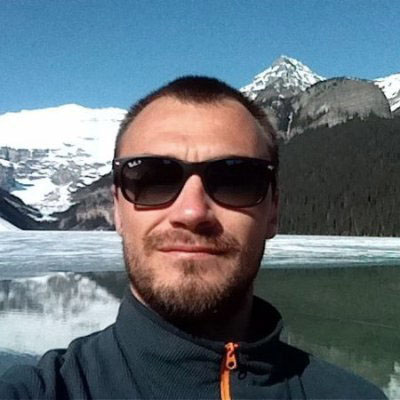
Dr Andreas Beinlich has a Diplom (~MSc) from the University of Würzburg (Germany), a Postgraduate Diploma from the University of Otago (New Zealand), and a PhD from the University of Oslo (Norway). Andreas' research is focused on the mechanisms, rates and consequences of fluid-rock interaction with application to economic and environmental challenges. During his PhD thesis research at the Norwegian Centre of Excellence Physics of Geological Processes (PGP), he investigated natural carbonation of ultramafic rocks as an analogue for geological CO2 sequestration under conditions ranging from deep hydrothermal to surface weathering. After completing his PhD, Andreas was appointed as a Postdoctoral Researcher at The University of British Columbia (Canada) and the Mineral Deposit Research Unit (MDRU). At MDRU he coordinated the industry-collaborative research project “Carbonate Alteration Footprints" (CAF), which focused on the application of stable isotope analysis during exploration for carbonate hosted hydrothermal ore deposits. He joined CCFS as a Research Fellow at Curtin University and The Institute for Geoscience Research (TIGeR) in September 2015 to continue his work on hydrothermal alteration of mainly mafic and ultramafic systems. His current research focuses on alteration-related mass transport, mineral replacement reactions and their time scales through investigation of hydrothermally altered mineral deposits of Western Australia, Canada and Norway in tandem with hydrothermal experimental work. Andreas' research contributes to CCFS Flagship Program 2.

Dr Montgarri Castillo-Oliver completed her Bachelor and Master degrees in Geology at Universitat de Barcelona. In November 2014, she joined CCFS as a cotutelle PhD student, carrying out her research both at Universitat de Barcelona and Macquarie University. Montgarri's thesis focused on the characterisation of the structure and metasomatic evolution of the subcontinental lithospheric mantle in NE Angola, based on the study of mantle xenoliths and their host kimberlites. In September 2016, she graduated with a PhD from both universities. Her current role as Research Associate in CCFS involves the textural, compositional and isotopic (C, O and Sr) characterisation of kimberlitic carbonates, using in situ techniques [(MC-)LA-ICPMS and SIMS]. Primary carbonates are targeted as CO2 traps and their study could provide new insights into the composition of the parental kimberlite melt (i.e. volatile contents), as well as the role of degassing processes during eruption. Her research contributes to the TARDIS II project, and also aims to enlarge the current understanding of the deep Earth's carbon cycle in cratonic roots by studying the C isotope variation of the deep mantle with space and time. See Research highlight Use and misuse of ilmenite in diamond exploration

Dr Denis Fougerouse completed his BSc at the university of Saint-Etienne (France) and his MSc at the University of Nancy (France). The research focus of his MSc was the timing of mineralisation events in the West Africa Craton using Re-Os dating. He subsequently joined the University of Western Australia at the Centre for Exploration Targeting (CET) for his PhD focused on the mineralisation processes occurring in the Giant Obuasi gold deposit. In his current position at Curtin University, Denis uses atom probe microscopy to understand the mechanisms of nanoscale trace element mobility associated with ore deposits and hydrothermal activity. His research contributes to CCFS Flagship Program 2.
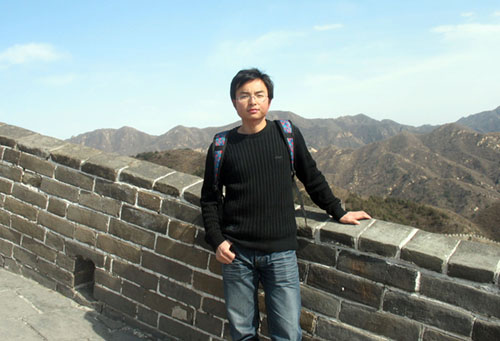
Dr Rongfeng Ge completed his undergraduate and MSc studies at Nanjing University (China), and joined CCFS in 2012 as a Cotutelle PhD candidate. He received his PhD degrees from Nanjing University in December 2014 and from Curtin University in August 2015. He is now a Research Associate at Curtin University. Rongfeng's study interests include origin and evolution of continental crust, reconstruction of Precambrian supercontinents, and tectonic evolution of orogenic belts. His study mainly focuses on the Tarim Craton, NW China, and the Central Asian Orogenic Belt. He uses multiple laboratory techniques as well as field-based work. His study has revealed the oldest rocks and crustal components from the Tarim Craton, a Tarim - North China connection in the Columbia/ Nuna supercontinent, and a long-lived subduction - accretionary orogenic system at the circum Rodinia subduction zone. Rongfeng's current study focuses on the Hadean detrital zircons from Jack Hills. Using cutting-edge techniques, including ion imaging and atom probe, Rongfeng will revisit the isotopic and elemental distributions and compositions of these ancient and complex zircon grains. His study will provide new insights into the origin of continental crust and the geodynamic setting in the early Earth. This research contributes to CCFS Flagship Program 6.
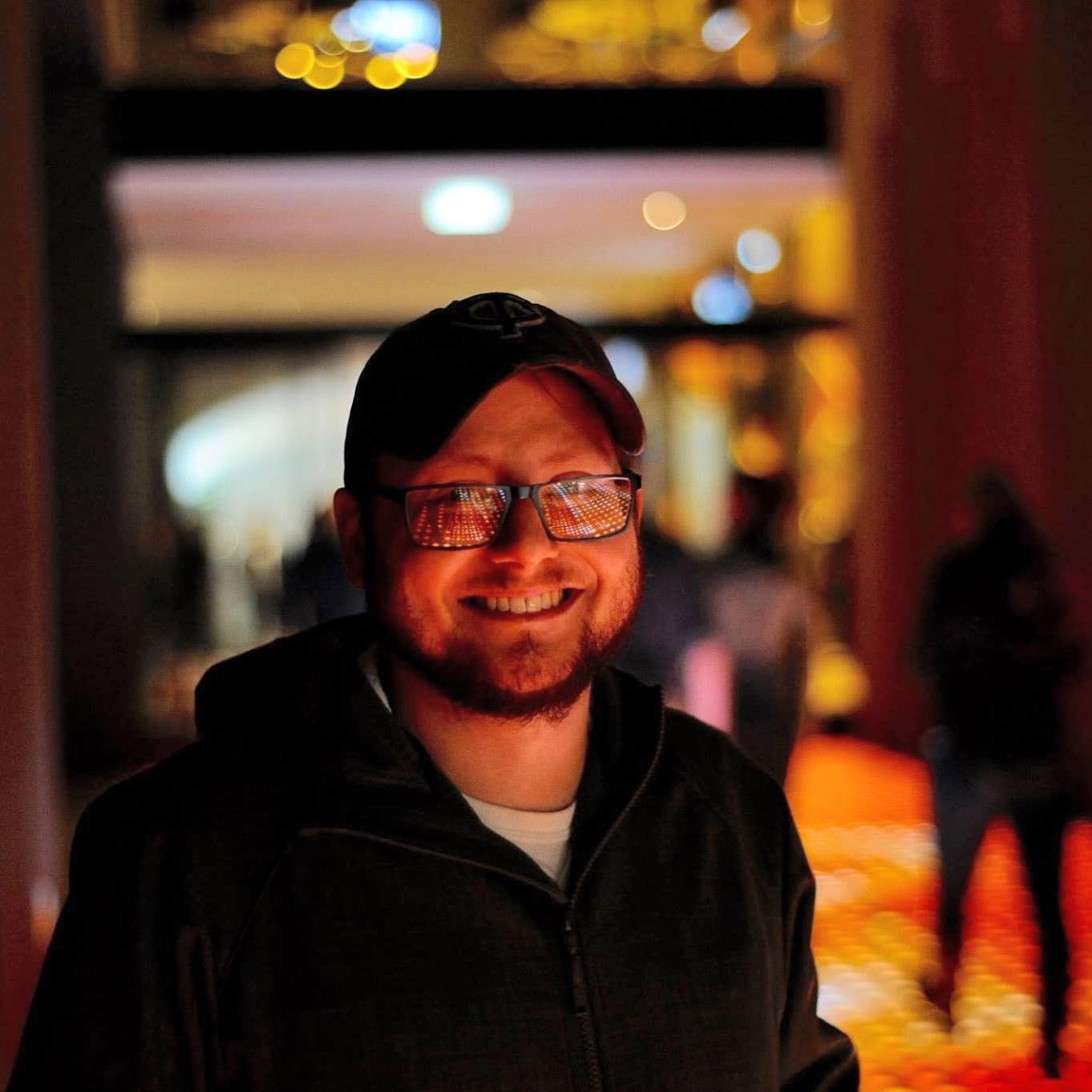
Dr Christopher Gonzalez joined the CET and CCFS team, first as a PhD student in 2012, and now as a Research Associate. Chris graduated from the University of Minnesota - Twin Cities with Bachelor of Science degrees in Geology andvGeophysics (2011). Chris undertook PhD studies at CET as part of the larger ARC Linkage project “Multiscale Dynamics of Ore Body Formation”. His research includes numerical modeling of geodynamic processes with a focus on H2O-CO2 fluids. Using a thermomechanical numerical modelling code (I2VIS), new (de) carbonation routines and carbonated lithologies were coded into I2VIS during his thesis to gain better understanding of the two most abundant recycled volatiles on Earth (H2O and CO2). As a Research Associate, he has used this code to quantitatively assess metasomatism and melting processes ongoing during continental collision using the Ivrea-Verbano zone as a natural laboratory. Specifically, sulfur-rich carbonate bearing ‘pods' were observed, which are thought to be a direct consequence of slab derived carbonic fluids interacting with the mantle wedge. To examine this hypothesis, the code Chris developed during his thesis was used to numerically constrain the sequence of events that led to the formation of the sulfur-rich carbonate pods. This research contributes to CCFS Flagship Program 2, Module 3 - Transient Geodynamics.
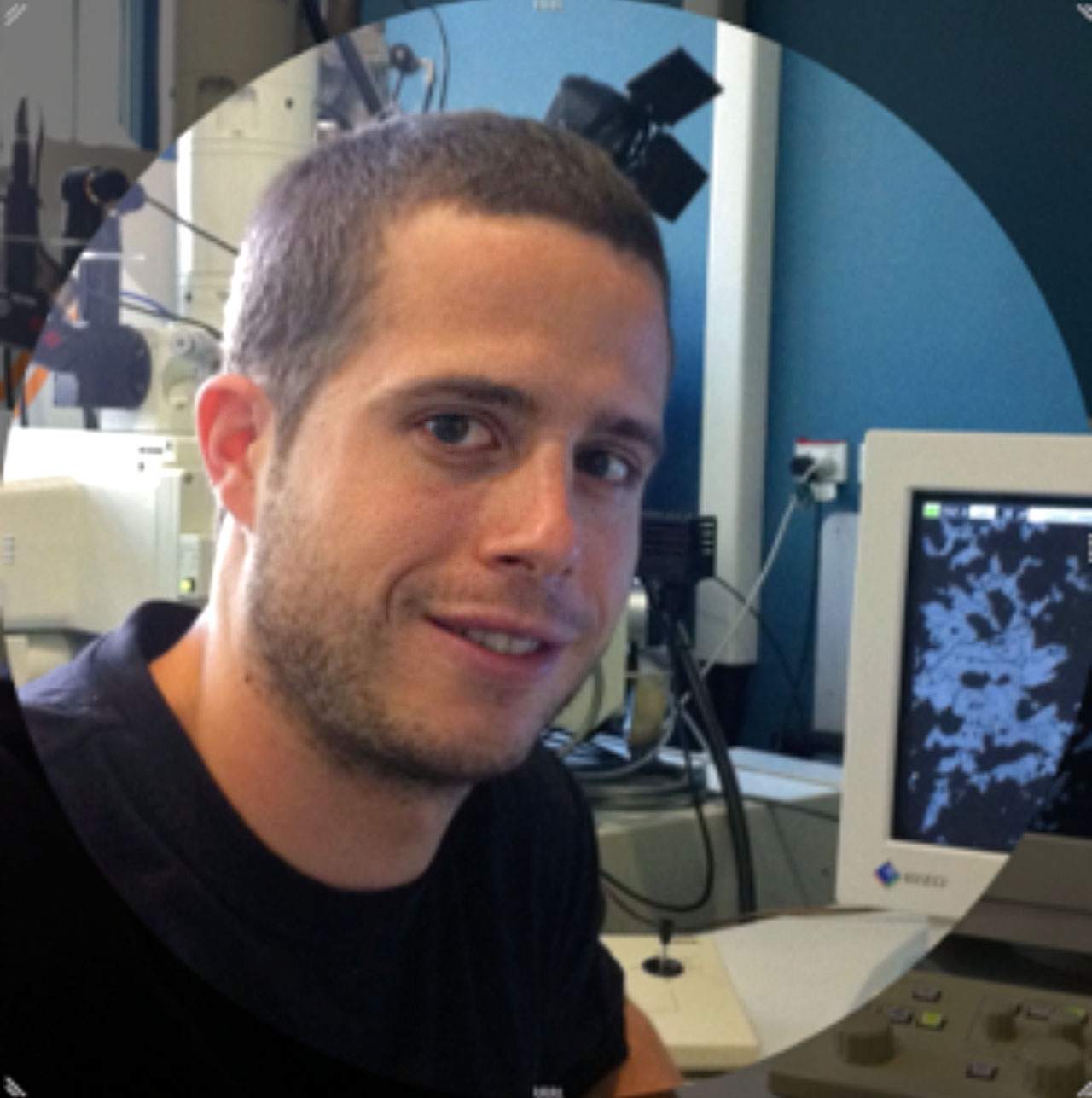
Dr Johannes Hammerli completed his MSc in Earth Sciences at the University of Bern, Switzerland, before moving to Townsville, Australia, to study for a PhD. He received his PhD from James Cook University in 2014, where he studied element mobility during metamorphism and the identification of hydrothermal fluids by microanalysis. He joined the CET in late 2014 on a Swiss National Science Foundation Fellowship. During this time he has focused on studying crustal differentiation and evolution. In May 2016, Johannes joined the CCFS research group where he focuses on microanalysis of accessory minerals, in particular apatite from magmatic systems, to unravel processes which lead to the fertile systems feeding ore deposits. His research contributes to CCFS Flagship Program 2. See Research highlight Apatite - tracer for the evolution of porphyry systems.

Dr Uwe Kirscher started in January 2016 as a CCFS funded Research Associate at Curtin University. He finished his PhD in geophysics at the Ludwig-Maximilians University in Munich in 2015 working on the Paleozoic paleogeography of the Central Asian Orogenic Belt using paleomagnetism. In early 2016, he joined Professor Zheng-Xiang Li's Laureate team at Curtin University. His research interests in this group are focused on Proterozoic paleomagnetic constraints of the Australian Precambrian blocks. He aims to use several paleomagnetic approaches in order to add constraints for a better and more precise understanding of the supercontinent cycle and its geodynamic features. His research contributes to CCFS Flagship Program 5. See Research highlight Earth’s magnetic switch activated in the deepest mantle.

Dr Erwann Lebrun is a structural geologist who typically uses a multidisciplinary-multiscale approach in his applied research. Erwann is currently a Research Associate at the Centre for Exploration Targeting (CET). His research interests are focused on the magmatism, tectonics and mineralisation of eastern Greenland. His experience spans 4 of the 6 continents and a wide range of geological terranes, ranging from Archean to Jurassic in age. Erwann received his BSc in Geology from Blaise Pascal University, France in 2008, an MSc in Economic Geology from the University of Québec in Montréal (UQAM), Canada and from the Earth Sciences Institute of Orléans (ISTO), France in 2010. Subsequently, Erwann moved to Australia to start a PhD which he recently finished at CET. His PhD project focused on the 4D evolution of the orogenic gold district of Siguiri, in Guinea (West Africa). This project was funded by AngloGold Ashanti and is part of the West African eXploration Initiative (WAXI). During his PhD, Erwann used a multidisciplinary set of geological tools such as structural geology, 3D modelling, geochronology, sedimentology and geochemistry, at the micro-, deposit, district and regional scale to reconstruct the deformation and hydrothermal history of the Siguiri orogenic gold district and the tectonic evolution of the Siguiri Basin, hosting the district. This integrated study permitted the identification of the controls on gold mineralisation in the Siguiri Basin and the development of various targeting criteria for future exploration strategies. His research contributes to CCFS Flagship Program 2. See Research highlight Is the Ammassalik Intrusive Complex (South East Greenland) part of an ancient Ni-Cu magmatic province?.
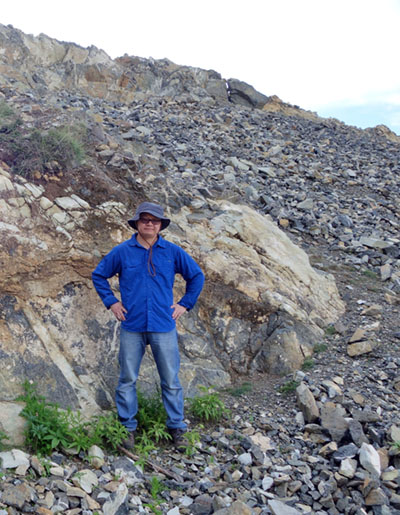
Dr Zhen Li was awarded his PhD Degree in 2011 from Nanjing University. He then joined China University of Petroleum, Beijing (CUPB) as a full-time Lecturer and was promoted to a position of Associate Professor (tenured) at CUPB in June 2014. Zhen then joined CCFS (Curtin) in 2016 as a Post-Doctoral Fellow. One of Zhen's research interests is to unravel the tectono-magmatic evolution of Earth. Zhen uses a multidisciplinary approach (geochronology, petrology and geochemistry, and isotope geochemistry), to explore complex geodynamic processess in deep-Earth, focusing on the Asia-Pacific region and Tibet. Zhen's on-going research also includes the geological processes in sedimentary basins and geochronology of oil-gas accumulation. He leads two research projects on the Re-Os geochronology of ancient oil pools in the Tarim and Yanshan basins, supported by China's Ministry of Education and the CUPB. As lead CI, Zhen has competitive research funding from the National Science Foundation of China, the 2015 Fok Ying Tung Education Foundation College and Higher Education Fellowship (both are equivalent to DECRA). His research contibutes to CCFS Flagship Programs 2 and 4.

Dr Ross Mitchell is a Research Fellow in the Earth Dynamics Research Group at Curtin University. He completed his PhD in geology and geophysics at Yale University in 2013 on Supercontinents, the true polar wander, and the paleogeography of the Slave Craton. His interests centre on the supercontinent cycle, which describes not only the suturing and rifting of continents via plate tectonics but also the wholesale organisation of mantle convection patterns, which has consequences for true polar wander. Prior to Pangea, paleomagnetism is the only quantitative method for reconstructing continents. Ross conducts extended paleomagnetic sampling campaigns grounded in field geology. Synthesising newly acquired data with the global paleomagnetic database, he aims to both generate paleogeographic maps for 3 billion years of Earth history and to evaluate how such empirical constraints shape plate tectonic and true polar wander theory. He pairs these studies of ancient supercontinents with detailed magnetostratigraphic profiles of Phanerozoic time and electron-probe analyses of magnetic mineralogy in order to test the limits of paleomagnetism as a paleogeographic method. His research contributes to CCFS Flagship Program 5.
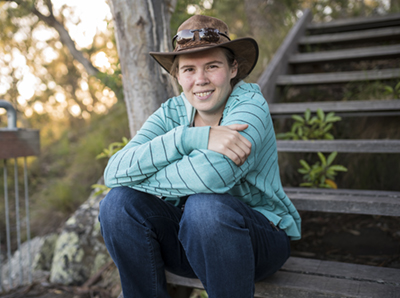
Dr Rosanna Murphy completed her PhD with CCFS/GEMOC in 2015. Her thesis examined the 3.1 Ga Mpuluzi Batholith in South Africa/Swaziland as a case study to understand the processes involved in the creation of ancient continental crust. In December 2015, Rosanna became the manager of the TerraneChron® team at CCFS. This role involves integrating in situ analysis of U-Pb ages, Hf-isotope, and trace element concentrations in zircons and involves collaboration with a number of industry and geological survey partners. This methodology has provided valuable insight into geological mapping and exploration programs. In 2016, TerraneChron® imaged and analysed 1642 zircon grains for a total of 9 different projects from Australia, Iran and the USA. See Research highlight Unveiling the early history of crust in Western Australia.

Dr Hugo Olierook is Dutch-Australian and completed his undergraduate studies at Curtin University in 2011. He continued at Curtin with a PhD into the tectonic and stratigraphic evolution of the Western Australian margin. After completing his PhD in 2015, he moved to the University of Liverpool as a NERC postdoctoral associate examining reservoir quality in the United Kingdom and adjacent petroleum domains. In November 2016, Hugo returned to Curtin University and joined CCFS to take up a two- year postdoctoral fellowship as part of the SIEF Distal Footprints project in the Capricorn Orogen of Western Australia. Hugo is using his expertise in geochronology, geochemistry, tectonics and geodynamics to understand the 3 billion year history of the Capricorn Orogen and its mineral endowment. His research contributes to CCFS Flagship Program 2.
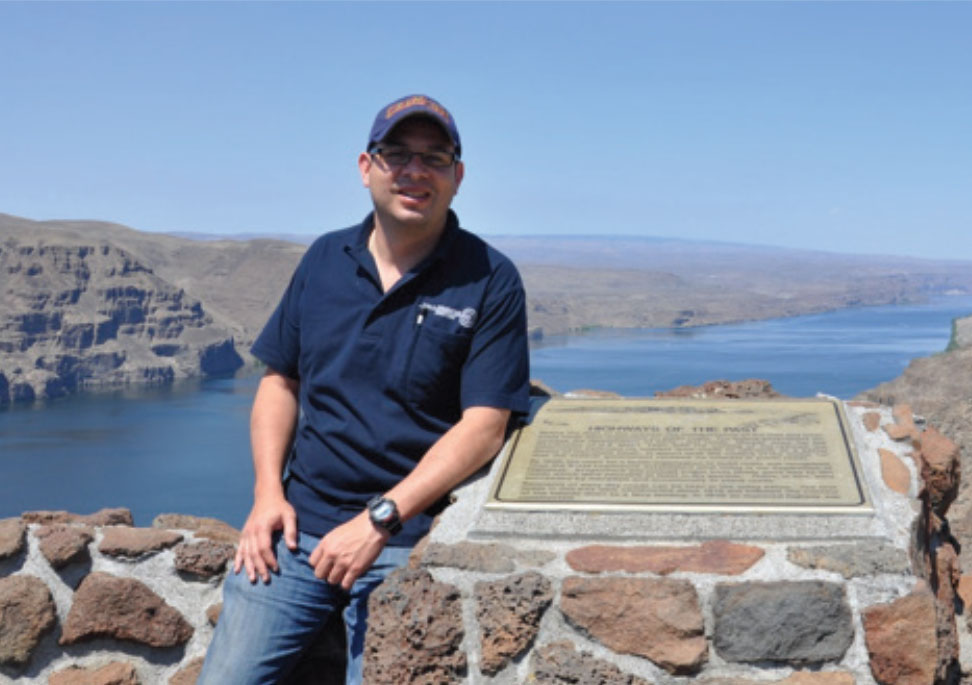
Dr Luis Parra Avila, from Caracas, Venezuela, earned his Bachelor's degree in 2007 at the University of Central Missouri, then moved to the state of Illinois to work on his Masters' degree, which he earned in 2010 at Southern Illinois University- Carbondale. His Masters' thesis involved Co-Ni enriched Mississippi Valley-type deposits in southeast Missouri. For the project, he had the support of the “The Doe Run Co.” This not only provided financial support, but allowed him to gain access to their mines and gain meaningful industry experience. After concluding his master degree, he continued his education at the Centre for Exploration Targeting (CET), University of Western Australia, where he earned his PhD in 2016. His PhD project focused on establishing the crustal tectonic history of the Paleoproterozoic Domain of the West African Craton across Burkina Faso, Ghana, Mali, Ivory Coast and Guinea and its links to mineral deposits. The project was funded through the ARC linkage program and was part of the AMIRA West Africa Exploration Program. In October of 2015, Luis joined CCFS as a post-doctoral research associate. His research focuses on evaluating zircon characteristics and its link to porphyry Cu deposits. The project seeks to develop new pathfinders to assist with the exploration of porphyry Cu deposits and to understand the difference between fertile and unfertile tectonic environments for such deposits. His research contributes to CCFS Flagship Program 2. See Research highlights - Isotopic canaries in zircon track Cu prospectivity across Southern Tibet and Zircon - a pathfinder for porphyry Cu ± Mo ± Au deposits.
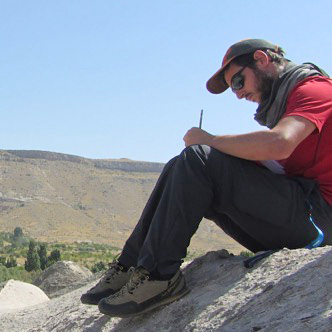
Dr Amaury Pourteau graduated from the University of Rennes 1 (France) in 2007 and joined the University of Potsdam (Germany) for his doctoral thesis, completed in 2011. In this project, he studied the tectonic-metamorphic evolution of low- grade, high-pressure metamorphosed sedimentary sequences of a Neotethyan continental margin in Anatolia. As a Lecturer and then Post-doc working on Late Cretaceous to Cenozoic metamorphic domains throughout Anatolia, he applied Lu-Hf garnet geochronology to address the pace of subduction and collision-related processes. In early 2016, he joined Curtin Earth Dynamics Research Group as a Research Fellow. He is supervising several field-based studies aimed at deciphering the tectonic evolution of the NE Australian Proterozoic inliers in order to provide new constraints on connections. Within this multidisciplinary project, he is addressing the age of prograde metamorphism in the different NE Australian inliers using mainly Lu-Hf garnet geochronology. This will shed light on the timing and mode of assembly of NE Australia and its connection with other continents during the amalgamation of the supercontinent Nuna. His research contributes to CCFS Flagship Program 5.
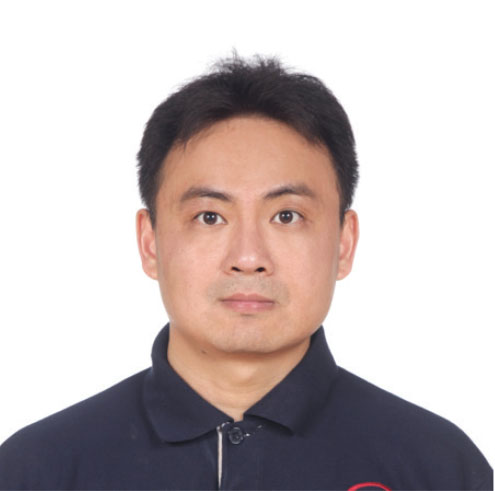
Dr Nan Zhang completed his BSc at Peking University, China. He pursued his MSc at University of Toronto, and PhD at University of Colorado, respectively. Before he joined Curtin University as a research fellow, he worked as postdoctoral fellow at Brown University and Woods Hole Oceanography Institution for 4 years. Currently, Nan works on the supercontinent geodynamics as part of Professor Zheng-Xiang Li's Laureate group. His researches focuses on 1) the global geodynamics associated with the supercontinent cycles, 2) lunar and planetary sciences, especially planetary interiors, and 3) melt-rock interaction with two-phase flow modelling. He primarily uses numerical methods to tackle geological problems. His research contributes to CCFS Flagship Program 5.
Continuing
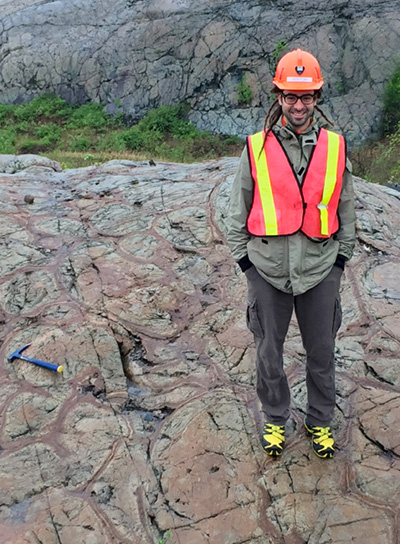
Dr Andrea Giuliani joined CCFS in June 2015 as an ARC DECRA (Discovery Early Career Research Award) Fellow. Andrea completed his PhD in mantle geochemistry at the University of Melbourne in 2013 where he then undertook a year of post- doctoral research in 2014 before becoming a lecturer in Igneous Petrology in January 2015. Andrea's research focuses on the composition and sources of deep Earth fluids and melts - including kimberlites, which are the main source of terrestrial diamonds. Specifically, kimberlites represent the deepest melts that reach the Earth's surface and therefore provide a unique probe into the deepest realms of our planet. At CCFS, Andrea is working closely with Professors Sue O'Reilly, Bill Griffin and Steve Foley to improve current understanding of the evolution of the Earth's interior and the melting processes affecting it, with particular attention to the role of volatiles and recycled crustal and surface material that trigger deep melting events. His research contributes to CCFS Flagship Program 1. See Research highlight What is the real S isotope composition of Earth’s mantle?
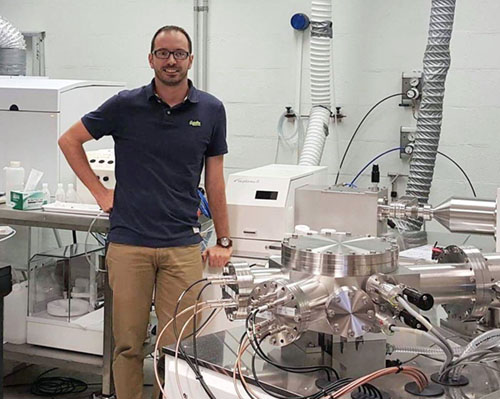
Dr Yoann Gréau joined GEMOC, MQ in 2007 as a PhD candidate (graduated 2011) after obtaining an MSc from the University of Montpellier II (France), where he trained in ultramafic petrology and geochemistry, studying ultra-refractory abyssal peridotites. During his PhD studies, he investigated the origin and history of eclogite xenoliths brought up from the lithosphere-asthenosphere boundary by kimberlitic magmas. His research focused on the petrology and geochemistry of the sulfide phases, looking at siderophile and chalcophile elements (e.g. Cu, Ni, Se, Te, PGEs and S isotopes). He also investigated the relationships between microstructures and mineral geochemistry (e.g. REE, HFSE, LILE and O isotopes) of the main silicate phases, demonstrating strong links between mantle eclogites and metasomatic processes occurring within the sub-continental lithospheric mantle. From 2013 to June 2015 Yoann co-managed the TerraneChron® team in CCFS. In July 2015, Yoann was appointed as a Research Associate within the CCFS Technology Development Program "GAU multi-instrument development - Frontiers in integrated laser-sampled trace-element and isotopic geoanalysis". In this role, Yoann aims to provide high-quality research related to the development of innovative methods for in situ analysis of trace elements, radiogenic isotopes and non-conventional stable isotope systems by laser ablation ICPMS. In particular, he will focus on promoting the advancement of geochemical methodologies and techniques involving the Femtosecond laser and the new Nu Plasma II Multi-Collector ICPMS (MC-ICPMS) installed at MQ in July 2015. His research also contributes to CCFS Flagship Program 1.
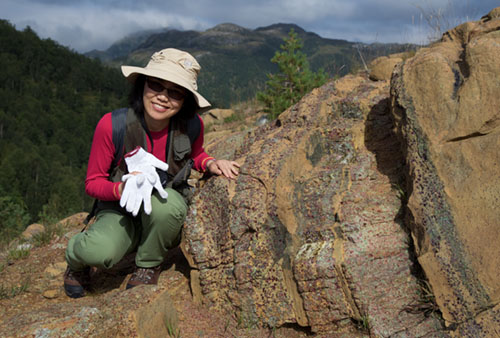
Dr Jin-Xiang Huang completed her undergraduate study at China University of Geosciences, Beijing. She received her PhD from Macquarie University in December 2011 studying the metasomatism and origins of xenolithic eclogites from the Roberts Victor kimberlite, South Africa. This provided her with experience in the clean labs, on state-of-art instruments producing precise geochemical data, and in integrating a wide range of information into a coherent model. Her research concluded that mantle metasomatism has completely changed the petrography and chemical and isotopic compositions of most eclogites; therefore, evidence from these can no longer be used to support the popular idea that they represent subducted oceanic crust. Information from the few unmetasomatised eclogites favours their origin from deep-seated magmas. After completing her PhD, Jin-Xiang joined CCFS as a Post- doctoral Research Associate, to work on the stable isotope and water contents of mantle rocks (both eclogites and peridotites) in different mantle processes (e.g. magma crystallisation, mantle metasomatism). This will provide a better understanding of mantle processes and further constraints on geodynamics. In 2016, she worked on the moissanite (SiC) project to unravel the relationships between alloy inclusions and the host SiC; to connect the SiC with the associated materials; to investigate the redox effects on C- and Si-isotope fractionation; to understand the formation and preservation of SiC; and to evaluate the redox state of the mantle in detail. Her research indicated that SiC was one product of the interaction of basaltic magma and mantle methane in a volcanic plumbing system in northern Israel. SiC crystallised from metallic melts that became immiscible during the reduction of the magma. Its low 13C may be caused by Rayleigh fractionation under reduced conditions; the variation of Si isotopes may reflect fractionation between immiscible metallic melts and silicate magma. Her research contributes to CCFS Flagship Program 1. See Research highlight - Strange mineral companions, Volcanic debris from up to 60 km beneath western Victoria tracks tectonic ups and downs and Birdshot on Mt Carmel: Immiscible metal, metal-oxide and silicate melts.

Dr Heejin Jeon received her Bachelor and Master degrees at the School of Earth and Environmental Sciences, Seoul National University. She was awarded a PhD at the Research School of Earth Sciences, Australian National University (2012). Her PhD project focused on continental crust evolution and crustal recycling in southeastern Australia (Carboniferous-Permian granites across the Lachlan Fold Belt and New England Orogen). During her time at ANU, Heejin worked extensively on zircon for U-Th-Pb dating, O and Hf isotope measurements (SHRIMP II and LA-MC-ICPMS). She then had two years of postdoc experience in the NORDSIM ion probe lab, Swedish Museum of Natural History, where she expanded her ion probe expertise with the CAMECA IMS1280 and contributed to a wide variety of collaborative projects. She also carried out a project in the Neoproterozoic Arabian Shield and studied how much this apparently juvenile crust is contaminated by older crustal materials. Heejin is now working at the Ion Probe Facility, CMCA, University of Western Australia, with CCFS participants Matt Kilburn and Laure Martin, to improve widely used isotope applications and also to develop new applications. Her research contributes to CCFS's Technology Development Program at CMCA.

Dr Crystal LaFlamme is Canadian and attended Acadia University for her BSc. She completed her MSc at Memorial University of Newfoundland studying the tectonostratigraphy and formation of volcanic rocks of the Makkovik Province in northern Labrador. Her PhD at the University of New Brunswick investigated the formation and geodynamic evolution of a reworked Archean high- grade terrane in the Western Churchill Province in the Canadian Arctic. She joined CCFS as a Postdoctoral Research Associate in February 2015 to study the sulfur isotope record of craton margins at the Centre for Exploration Targeting, University of Western Australia. Her research focuses on anomalous sulfur isotope signatures preserved in the Archean-Proterozoic rock record. Crystal is leading the development of a suite of reference materials for in situ multiple sulfur isotope analysis of magmatic and hydrothermal ore deposit sulfides. Early sulfur and lead isotope results demonstrate that sulfur and metals in certain Proterozoic ore deposits are being sourced from metal- endowed Archean cratons. This knowledge base is building to ultimately better understand the link between fluid-driving tectonic processes and ore genesis. Her research contributes to CCFS Flagship Program 2. See Research highlight Ancient sulfur species recycled into younger igneous rocks.
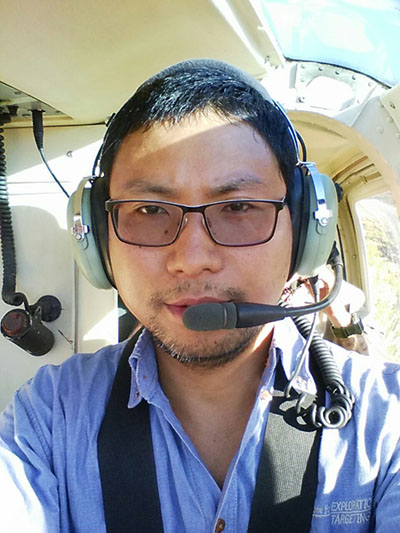
Dr Yongjun Lu is the Senior Geochronologist at the Geological Survey of Western Australia (GSWA), an Associate Investigator at CCFS, and an adjunct Senior Research Fellow at the Centre for Exploration Targeting (CET), UWA. Together with Dr Michael Wingate at GSWA, Yongjun is ensuring that about 80 samples from WA are dated by SHRIMP every year, contributing to a fantastic world-class geochronological dataset, the foundation for understanding Earth's evolution and mineral resources formation. He manages the isotopic program at GSWA such as Sm-Nd (c. 100 samples per year), Lu-Hf (c. 100 samples per year) and O isotopes (c. 50 samples per year), which are used to tackle various scientific questions such as imaging the lithospheric architecture through cover and understand crustal evolution and mineral deposit formation. In addition, Yongjun is leading a project at GSWA investigating the zircon chemistry of Archean granitoids, which is aimed at unravelling the pressure, temperature, water content and redox state of Archean granitoids. He is also involved in studying the petrology, geochemistry, isotopes and tectonics of the Southwest Terrane of the Yilgarn Craton, and is investigating the detrital zircon records of the Kimberley Basin to correlate the different basins in the North Australian Craton. Through CCFS, Dr Lu has ongoing collaboration with Chinese Academy of Geological Sciences (CAGS) and China University of Geosciences in Beijing (CUGB) to investigate the porphyry copper systems in the Tibetan plateau and surrounding region. Yongjun is invited to chair the session “Mineral Deposits in Tibet” at SEG 2017: “Ore Deposits of Asia: China and Beyond”. His research contributes to CCFS Flagship Program 7. See Research highlights - Unveiling the early history of crust in Western Australia,Isotopic canaries in zircon track Cu prospectivity across Southern Tibet and Zircon - a pathfinder for porphyry Cu ± Mo ± Au deposits..
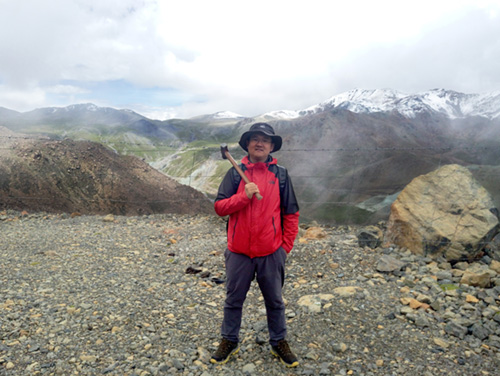
Dr Qing Xiong completed his undergraduate studies at China University of Geosciences (Wuhan), and joined CCFS in 2011 as a Cotutelle PhD candidate. He received PhD degrees from China University of Geosciences (Wuhan) in December 2014 and from Macquarie University in November 2015. Qing's PhD project focused on the origin and evolution of orogenic peridotites and ophiolites from Tibet (China), and revealed the detailed upper- mantle processes and subduction geodynamics during the assembly of the Tibetan-Himalayan Plateau in the Phanerozoic, using conventional and cutting-edge methodologies. Qing commenced his employment as a Research Associate at CCFS, Macquarie University in June 2015. His current research focuses on the mantle rocks from the representative ophiolites in the Yarlung Zangbo Suture Zone of South Tibet as part of targets of CCFS Flagship Program 1, TARDIS II. He has systematically collected ultramafic rock samples from the Kangjinla and Dazhuka ophiolites, and is planning to carry out petrochemical and microstructural characterisation of these ophiolitic mantle sections, using petrochemical and Electron Backscattered Diffraction (EBSD) tools. He also started to work on the super-reducing mineral assemblages in the Zedang and Kangjinla ophiolites. The studies will provide new insights into 1) tectonics of the Neo-Tethyan Ocean between Eurasia and Greater India, 2) mantle recycling processes and unusual interaction between fluids/magmas and mantle rocks in subduction and collision zones, and 3) the genesis of chromitite ore deposits in ophiolites. See Research highlight - Strange mineral companions and Volcanic debris from up to 60 km beneath western Victoria tracks tectonic ups and downs.
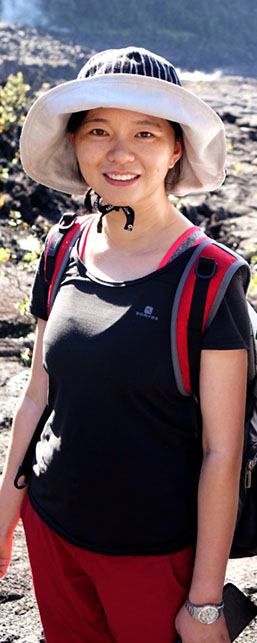
Dr Weihua Yao completed her undergraduate study at China University of Geosciences (Wuhan), and graduated with a PhD degree from Curtin University in July 2014. She then joined CCFS as a Postdoctoral Research Associate after her graduation, working with CCFS, TIGeR, ACTER and IGCP648 at Curtin University. Her research mainly focuses on sedimentary, stratigraphic and provenance correlations between the Indian-Australian Gondwana and Asian continents (including South China and Indochina blocks), and also the Precambrian paleogeography of Hainan Island in the supercontinents Nuna and Rodinia. Two main highlights of her research suggest an Ediacaran-Cambrian collision between South China and northern India, leading to the formation of the Nanhua foreland basin and the Ordovician- Silurian Wuyi-Yunkai orogeny in South China; and Hainan Island's connection with western Laurentia during the Nuna breakup and Rodinia assembly. Weihua is also leading a China Geological Survey funded project, investigating the Ediacaran-Silurian basin on the western Yangtze margin of South China. Her research contributes to CCFS Flagship Program 5.
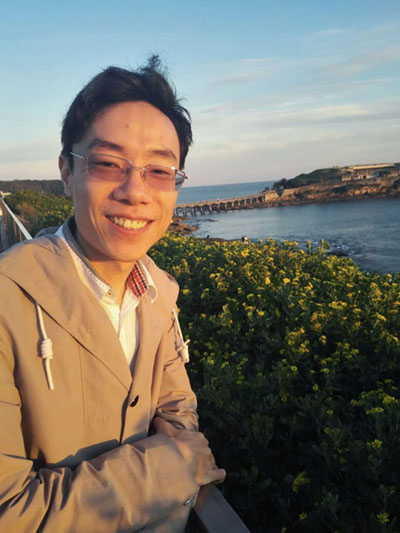
Dr Siqi Zhang completed his undergraduate study at Peking University, Beijing, and graduated with a PhD from the University of the Chinese Academy of Science (July 2011). He then took up a postdoctoral fellowship at University of Chinese Academy of Science from 2011 to 2013. His research focused on using high performance computation with high resolution models to solve different geodynamic problems. Siqi joined CCFS as a Postdoctoral Research Associate in April 2013. Since then, his research has focused on using high resolution numerical models to study planetary evolution. He is exploring the construction of an Earth mantle- flow model constrained by plate motion in the past few hundred million years to recover the mantle structure and to track its evolution over that time. He has built new features into existing mantle dynamic codes to better address early planetary body evolution, such as decaying radioactive heating, heating from large impacts, core-mantle coupling, and treatment for melt extraction. Working with Craig O'Neill, the code has been applied to early planetary evolution studies: 1) exploring the plausibility of mobile-lid tectonics on early Mars; 2) studying impact triggered tectonics on Hadean Earth; 3) modelling the lunar magma-ocean overturn and its effect on crustal evolution. In addition, he is involved in developing high performance SPH (smoothed particle hydrodynamics) code using an Intel Xeon Phi co-processor to study the process of planetary formation. His research contributes to CCFS Flagship Program 3.

 ARC Centre of Excellence for Core to Crust Fluid Systems
ARC Centre of Excellence for Core to Crust Fluid Systems